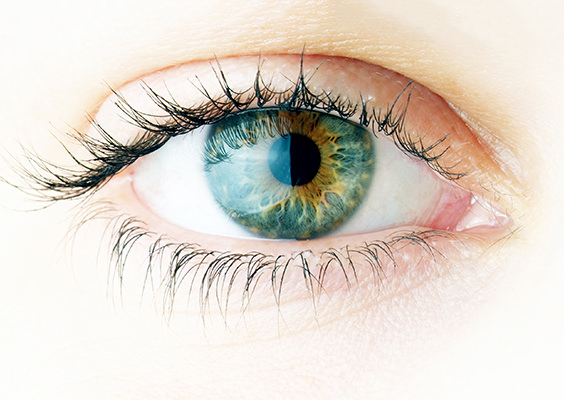If you’re one of the 40% of Americans who wears glasses or contact lenses for distance viewing, you probably believe your bad vision is genetic.

It’s not.
But the belief that myopia — or nearsightedness — is hereditary is so prevalent that no one even questions it. If you have trouble seeing faraway objects, you’ll just be given a prescription for glasses. Your eye doctor isn’t interested in finding out the true cause of your poor eyesight.
Myopia Epidemic
And that’s a shame, because the rates of myopia are rising in epidemic proportions around the world. It’s even worse in Asia than it is in the U.S. About 90% of young people there are nearsighted!
That proves it’s not genetic! As obvious as that seems, doctors are still misleading their patients.
This is a modern problem. Our primal ancestors had perfect vision. They needed to so they could hunt for food.
And when I visit native tribes in remote villages, I don’t find many people at all who have myopia. In fact, studies show that among indigenous people, rates of myopia are extremely low. But as modern culture reaches these tribes, rates shoot up. In a study of Inuit people on the northern tip of Alaska, only 2 out of 131 had myopia. But more than half of their children and grandchildren had the condition.1
So what’s going on?

For one thing, the human eye is designed for distance viewing. When you look out 20 feet or more, light enters your eye naturally. Your eye muscles relax to let it in. But when you focus on nearby objects, your eye muscles tense up.
In our high-tech world we stare at gadgets all day long. Our eye muscles rarely have time to relax. All that muscle tension reshapes the eyeball. Instead
of round, it becomes egg-shaped.When that happens, light doesn’t hit the retina at the back of the eye. It stops short. And the image is blurred.
The Real Cause Of Myopia
So you might think close work is the culprit behind the myopia epidemic. But that’s not what the science says. Studies can’t find any direct link between myopia and hours spent reading or working on a computer.
But when researchers from Ohio State University tracked the activities of more than 500 8- and 9-year-olds with healthy eyesight, they got a real surprise. After five years, they found that 20% of the children developed myopia. And the ones most likely to get it were those who spent the least time outdoors.2
Another study of 4,000 children in Australia confirmed that children who spend less time outside are at greater risk of becoming nearsighted. And it didn’t matter what they did outside. They could be engaged in sports, or playing, or even reading books. What mattered most was exposing the eyes to bright light.3
Benefits Of Natural Sunlight
In other words, the natural light of the sun is what gave our primal ancestors healthy vision. It makes sense. You see, sunlight triggers the release of dopamine in the retina. This helps control the growth and development of the eye. When we don’t get enough dopamine, the eye grows out-of-control. It stretches lengthwise like an egg.
Animal studies show that natural sunlight (about 30,000 lux — a measure of brightness) produces enough dopamine to stop the eye from growing into the myopic egg shape. But our typical home lighting (about 500 lux) does not.4
Sun exposure really works. In a Chinese study, teachers were asked to send children outside for 80 minutes a day. After one year, only 8% developed myopia, compared with 18% at a control school.5 Other studies show that children need about three hours a day under light levels of at least 10,000 lux to protect against myopia.
Sadly mainstream medicine today views the sun as the enemy. But I advise my patients to get plenty of natural sunshine. Healthy vision is one more good reason to get outdoors every day. And why it’s so important to encourage your grandkids to put down their iPads and get outside to play.
How To Protect Your Vision?
In the meantime, there are other steps you can take to protect your vision. And that includes getting the right supplements. Here are some of my favorites:
- Ginkgo biloba boosts healthy blood circulation to your eyes and reduces inflammation. And studies show that supplementing with this herb improved the vision of people with glaucoma. That’s important. Because there’s a strong relationship between being myopic and the risk of developing glaucoma.

I recommend getting at least 50 mg a day to support your vision.
- Lutein and zeaxanthin are carotenoids that are critical for optimal ocular health.
Eggs are a great dietary source of lutein. So are mangoes, sweet potatoes, and dark, leafy greens like spinach, kale, collards and Swiss chard.

Zeaxanthin is found in colorful fruits and vegetables like zucchini, squash and kiwi. But one of the best sources is the orange bell pepper.Try This Recipe
For a vision-boosting treat, try sautéing spinach, orange bell peppers and garlic in a little bit of coconut oil. Add a dash of natural sea salt and black pepper to taste and enjoy!
You can also find supplements online and in health food stores that contain both lutein and zeaxanthin. Look for one with at least 20 mg of lutein and 1mg of zeaxanthin.
To Your Good Health,
![]()
Al Sears, MD, CNS
1. Young, F. A. et al. “The Transmission Of Refractive Errors Within Eskimo Families.” Am. J. Optom. Arch. Am. Acad. Optom. 46, 676–685 (1969).
2. Jones, L. A. et al. “Parental History of Myopia, Sports and Outdoor Activities, and Future Myopia.” Invest. Ophthalmol. Vis. Sci. 48, 3524–3532 (2007).
3. Rose, K. A. et al. “Outdoor activity reduces the prevalence of myopia in children.” Ophthalmology 115, 1279–1285 (2008).
4. Ashby, R. S. & Schaeffel, F. “The effect of bright light on lens compensation in chicks.” Invest. Ophthalmol. Vis. Sci. 51, 5247–5253 (2010). Wu, P.-C., Tsai, C.-L.,
5. Wu, H.-L., Yang, Y.-H. & Kuo, H.-K. “Outdoor activity during class recess reduces myopia onset and progression in school children.” Ophthalmology 120, 1080–1085 (2013).

